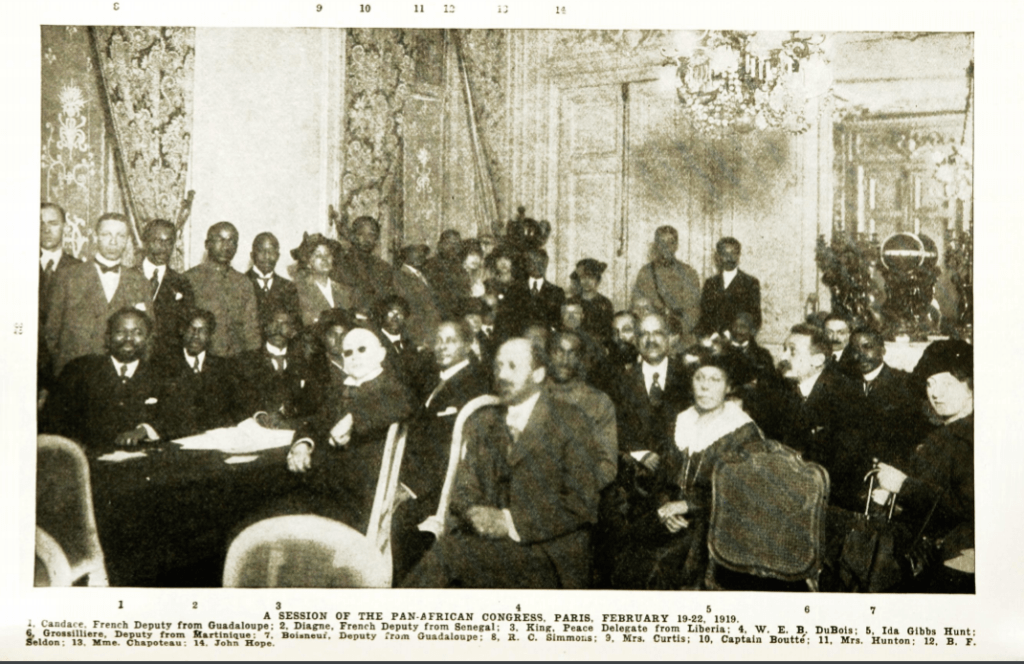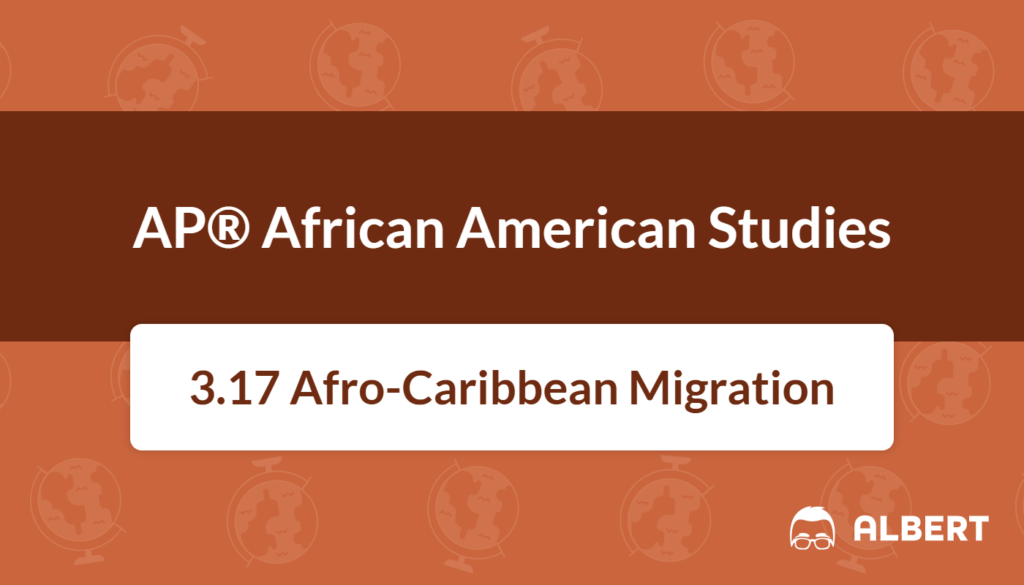What We Review
Introduction
Afro-Caribbean migration was a significant chapter in African American history, influencing cultural, economic, and social developments in the United States. Understanding how and why Afro-Caribbean people came to the U.S. is essential for grasping the larger narrative of Black experiences in the twentieth century. Moreover, it shows how events in the Caribbean intersected with changes in the U.S., shaping a vibrant tapestry of African American life.
Students often find this topic challenging because it blends international events, shifting economies, and the stories of everyday people. Therefore, this post will break down the reasons for migration, explore how Afro-Caribbean newcomers established themselves, and highlight the lasting effects on African American communities.
Reasons for Afro-Caribbean Migration
Afro-Caribbean migration to the United States gained momentum in the early twentieth century. These movements align with Learning Objective (LO) 3.17.A, which asks learners to explain the reasons for the increase in Black Caribbean migration to the U.S. during the first half of the twentieth century. According to Essential Knowledge (EK) 3.17.A.1, several factors spurred Afro-Caribbeans to leave their homelands.
Decline of Caribbean Economies
During World War I, many islands in the Caribbean experienced a serious economic downturn. Agricultural production—often the main source of income—suffered as demand for goods like sugar declined. Additionally, infrastructure projects were disrupted, leading to fewer jobs for local populations. Moreover, competition from other global markets made it difficult for Caribbean exports to stay profitable. Therefore, many Afro-Caribbean people sought better opportunities abroad, particularly in the United States.
Expansion of U.S. Political and Economic Interests
Another motivating factor for migration was the expanding influence of the United States. In 1903, the U.S. acquired the Panama Canal, securing strategic and commercial advantages in the region. The canal project required a large workforce, and while some Afro-Caribbean workers initially traveled to Panama for jobs, many later journeyed to the United States in search of new economic opportunities. In addition, growing American political ties with various Caribbean islands led to agreements and policies that sometimes simplified travel to the U.S.
Economic, Political, and Educational Opportunities
Afro-Caribbeans hoped for steady employment, better labor conditions, and the chance to improve their family’s livelihood. They also faced political challenges in their home countries, including restrictive colonial policies. Consequently, migrating to the U.S. represented a chance to enjoy more freedoms and possibly pursue higher education. Many believed that American colleges would offer advanced courses and scholarships not available in the Caribbean. Step by step, these migrants saved money, found sponsors, or joined relatives already living in cities such as New York, hoping to build better futures.
Patterns of Migration
Patterns of Afro-Caribbean migration reflect a complex interplay of push and pull factors. According to Learning Objective (LO) 3.17.B and Essential Knowledge (EK) 3.17.B.1, more than 140,000 Afro-Caribbean immigrants arrived in the U.S. between 1899 and 1937.
- The majority of these migrants traveled by ship, facing harsh conditions and long journeys.
- Some families arrived in phases, with one or two members coming first to secure housing before sending for relatives.
- A portion of migrants settled in states close to shipping ports to reduce travel costs and stay connected to friends and family back home.
Key Regions of Settlement: Florida and New York
Florida and New York became two major destinations. Afro-Caribbeans working in agriculture often settled in Florida, drawn by its climate and familiar crops. Next, those seeking industrial or service-sector jobs headed to major cities in New York. Over time, close-knit communities formed, leading more migrants to follow friends and relatives to these areas.
Factors Influencing Settlement Patterns
Several factors shaped where Afro-Caribbeans lived in the U.S. First, job availability often took priority, leading people to areas with factories or farmlands. Second, existing support networks offered guidance, financial help, and community ties. Lastly, educational institutions, such as colleges in New York, attracted those seeking to study. Therefore, settlement patterns frequently mirrored both economic necessities and personal aspirations.
Effects of Afro-Caribbean Migration
Afro-Caribbean migration brought important changes within African American communities, echoing Essential Knowledge (EK) 3.17.B.3 and EK 3.17.B.4. These transformations ranged from greater religious diversity to fresh perspectives on Black identity.
Increased Religious and Linguistic Diversity
Many of the new arrivals came from islands where Catholic, Anglican, or Episcopalian practices were prevalent. They also spoke languages or dialects influenced by French, Spanish, or Creole backgrounds. Consequently, established African American communities adapted to a wider variety of worship styles and languages. Churches became central meeting points for celebratory gatherings and mutual aid. For example, Catholic parishes started food drives and community centers, accessible to newcomers who might have otherwise felt isolated in a predominantly Protestant community.
Changes in Cultural Dynamics
Over time, unique musical styles, accents, and storytelling traditions from the Caribbean merged with African American customs. This blending inspired new artistic creations, such as jazz infused with calypso rhythms. Additionally, local businesses selling Caribbean groceries and spices sprang up in neighborhoods like Harlem, allowing Afro-Caribbean individuals to maintain culinary traditions.
Contributions of Afro-Caribbean Intellectuals
A particularly significant development was the role Afro-Caribbean intellectuals played in radicalizing Black thought and activism. These thinkers introduced bold ideas about self-determination and unity within the African diaspora. Their actions addressed Learning Objective (LO) 3.17.B, which notes the influence of Afro-Caribbean migrants on African American communities.
Radical Black Thought and Social Movements
Afro-Caribbean intellectuals drew from their experiences of colonialism and racial inequality in the Caribbean to challenge similar issues in the U.S. Therefore, they encouraged African Americans to question discriminatory practices more aggressively. Some of these intellectuals led community organizations, wrote for influential newspapers, or joined political movements.
For example, certain figures championed the idea of Pan-Africanism—a movement promoting solidarity among all people of African descent worldwide. These ideas later influenced civil rights organizations by highlighting issues of race, class, and global justice. As a result, Afro-Caribbean leaders often injected new energy into ongoing Black social movements, which resonated with younger generations.

Required Source in Focus
“Restricted West Indian Immigration and the American Negro” by Wilfred A. Domingo, published in 1924, provides a firsthand account of how Afro-Caribbean immigrants faced discrimination and government restrictions. Domingo’s article appeared at a time when many Americans questioned the motives of Black immigrants. He argued that Afro-Caribbean newcomers should be embraced rather than rejected, because their arrival brought new ideas and labor skills to African American communities.
Historical Context: This text surfaced shortly after the height of migration between 1899 and 1937. During this period, concerns about unemployment and cultural differences influenced debates on immigration. Domingo’s stance underlined the shared experiences of Afro-Caribbean migrants and African Americans, emphasizing unity in the face of common struggles.
Relevance: Domingo’s piece highlights the tension between established African American communities and new arrivals, but it also encourages cooperation. His commentary vividly shows how public perception of Afro-Caribbean people could either strengthen or weaken the broader Black community’s fight for equality.
Impact: Domingo’s work continues to inform discussions on immigration and intra-Black relations. It remains significant for students studying this era because it reveals both the challenges faced by migrants and the evolving nature of African American identity.
Conclusion
Afro-Caribbean migration to the United States reshaped the cultural and political landscape of African American communities. Key motivations included the decline of Caribbean economies, the pull of U.S. economic and political opportunities, and the desire for better education. These migrants settled mainly in Florida and New York, forging distinct neighborhoods and broadening local cultures.
Their arrival also raised important questions about religion, language, and identity. Afro-Caribbean intellectuals brought radical new ideas, influencing the development of Black social movements. Through works like Wilfred A. Domingo’s article, it is clear that Afro-Caribbean migration added vital perspectives to the African American experience.
Today, the waves of migration during this period continue to echo in current discussions of diaspora, belonging, and cultural exchange. It is a testament to how minority groups adapt, push boundaries, and contribute to the historical fabric of the United States.
Quick Reference Chart
Below is a concise chart of key terms and concepts related to Afro-Caribbean migration. Copy and paste this table into a Google Doc for an easy study tool.
| Term | Definition or Key Feature |
| Afro-Caribbean Migration | Movement of peoples from the Caribbean to the United States, especially in the early twentieth century |
| Panama Canal (1903) | A waterway linking the Atlantic and Pacific Oceans, acquired by the U.S. for strategic and commercial benefits |
| Economic Opportunities | Job availability and better wages that attracted migrants to U.S. cities and farms |
| Religious Diversity | The increased variety of Christian denominations (Catholic, Anglican, Episcopalian) and other faiths introduced by Afro-Caribbean migrants |
| Linguistic Diversity | Introduction of new languages and dialects, influenced by French, Spanish, or Creole cultures |
| Radical Black Thought | Progressive ideas challenging racism, colonialism, and inequality, often shaped by experiences in the Caribbean |
| Wilfred A. Domingo | Author of “Restricted West Indian Immigration and the American Negro,” highlighting challenges faced by Afro-Caribbean immigrants |
| Diaspora | Movement and scattering of people from their homeland, often preserving cultural ties abroad |
Students exploring this topic are encouraged to reflect on how historical events in one region can influence migration patterns in another. Therefore, examining Afro-Caribbean migration illustrates both the shared and distinct experiences that have shaped African American history.
Sharpen Your Skills for AP® African American Studies
Are you preparing for the AP® African American Studies test? We’ve got you covered! Try our review articles designed to help you confidently tackle real-world AP® African American Studies problems. You’ll find everything you need to succeed, from quick tips to detailed strategies. Start exploring now!
Need help preparing for your AP® African American Studies exam?
Albert has hundreds of AP® African American Studies practice questions, free response, and full-length practice tests to try out.









